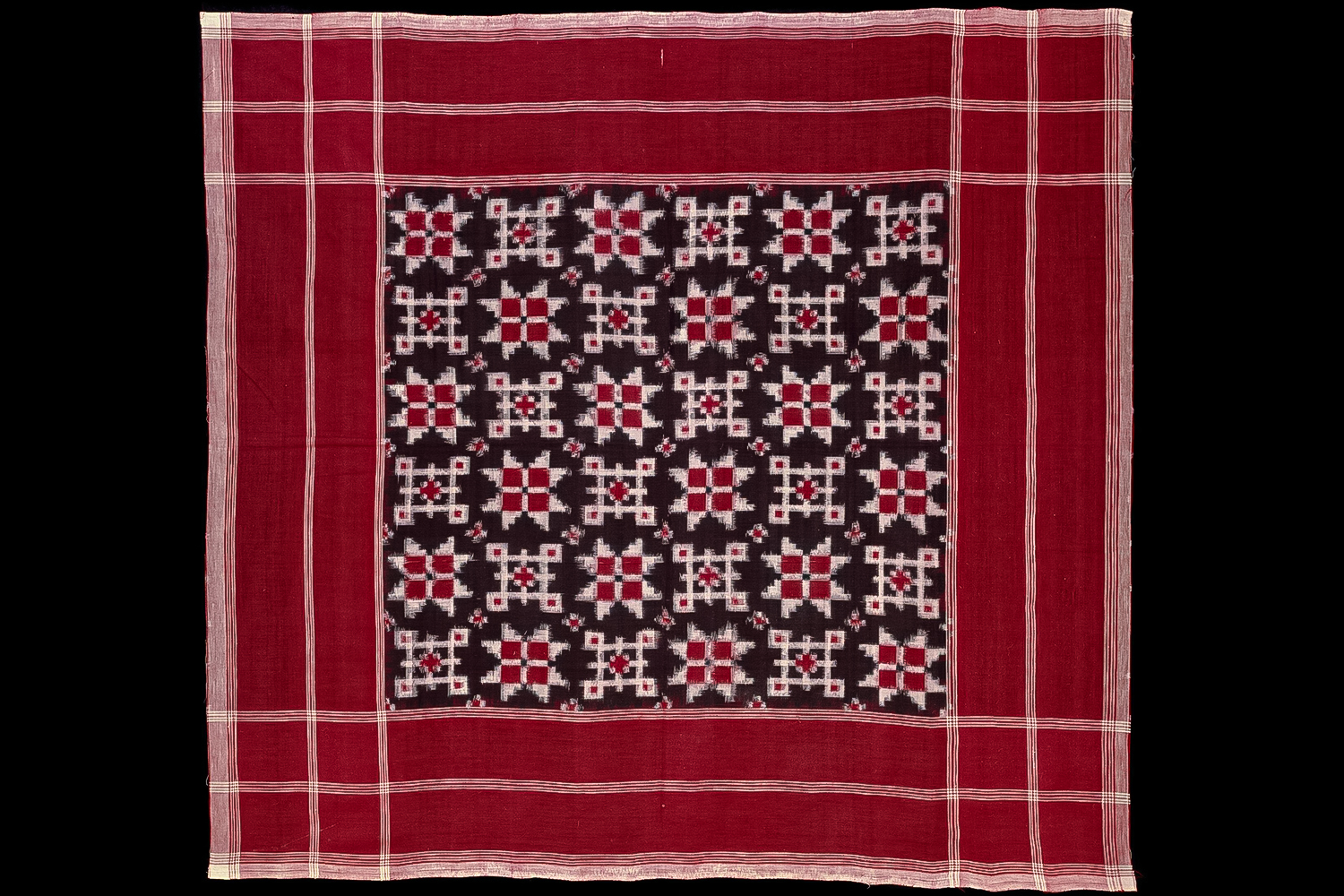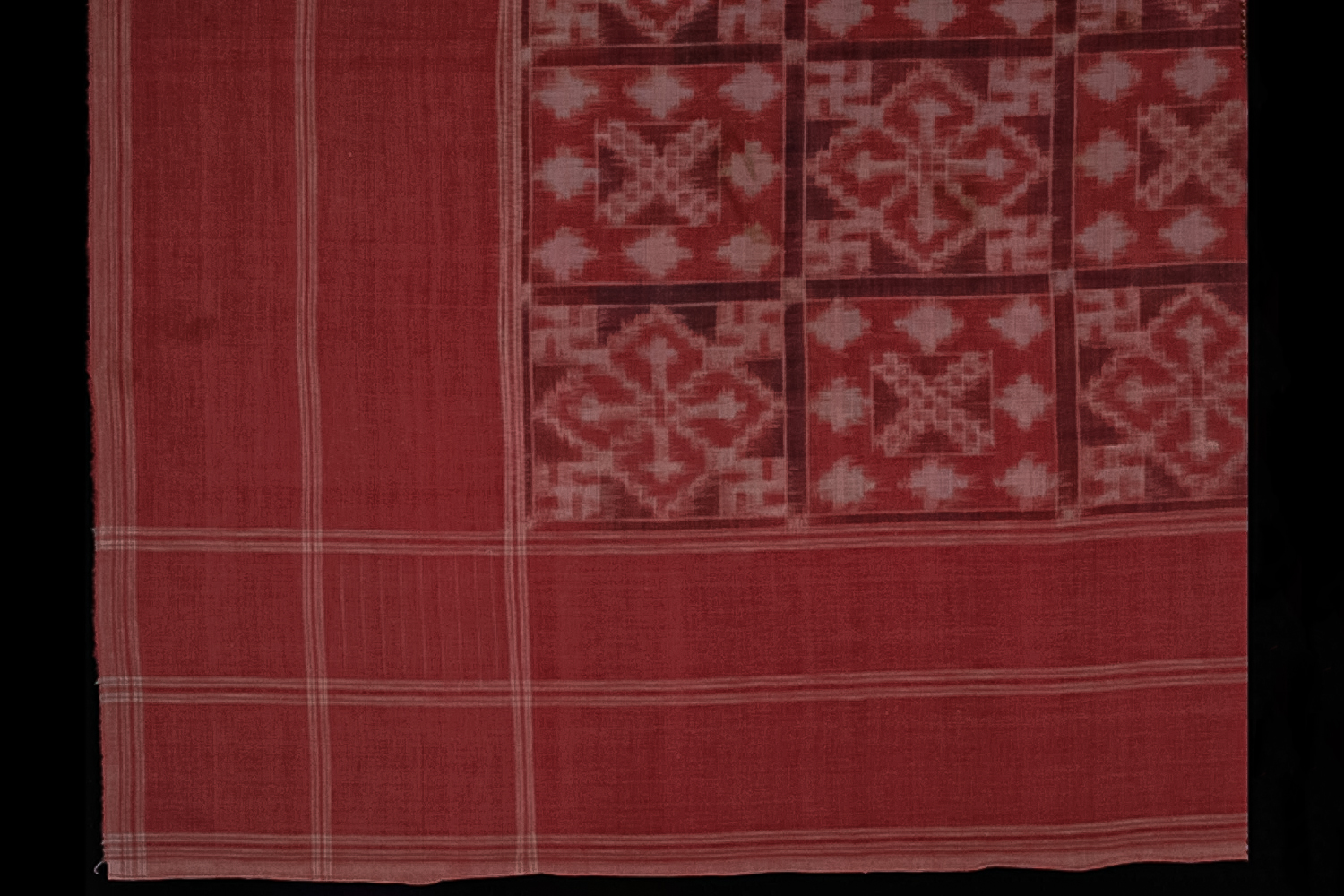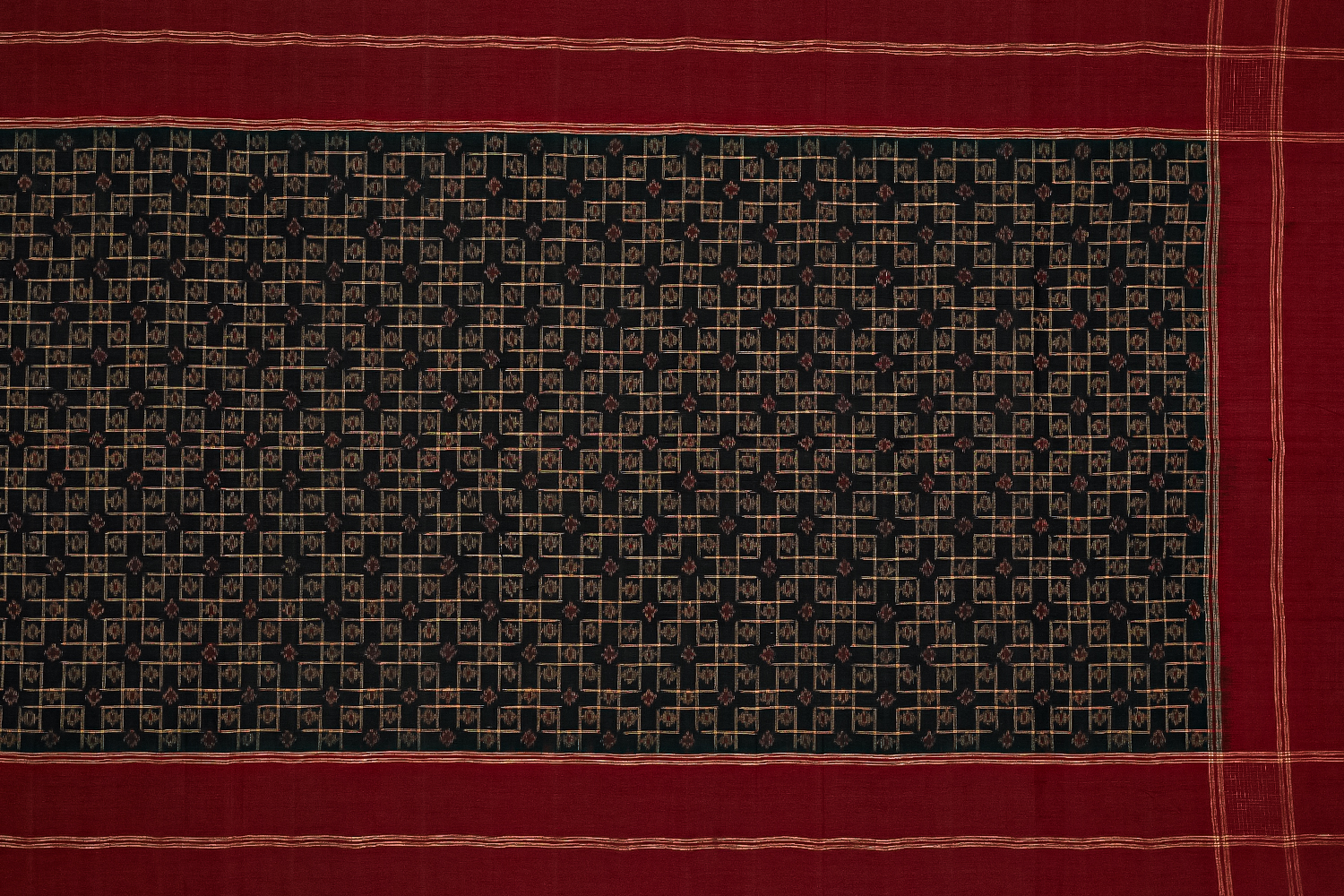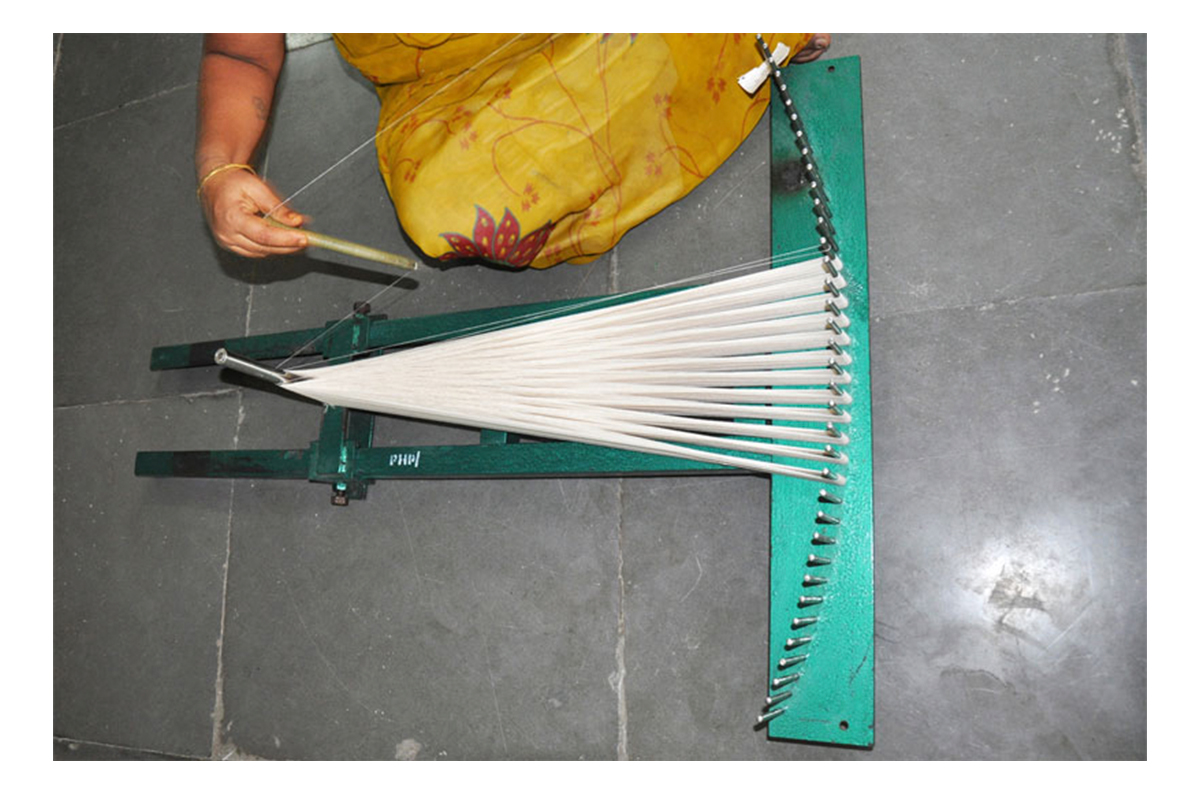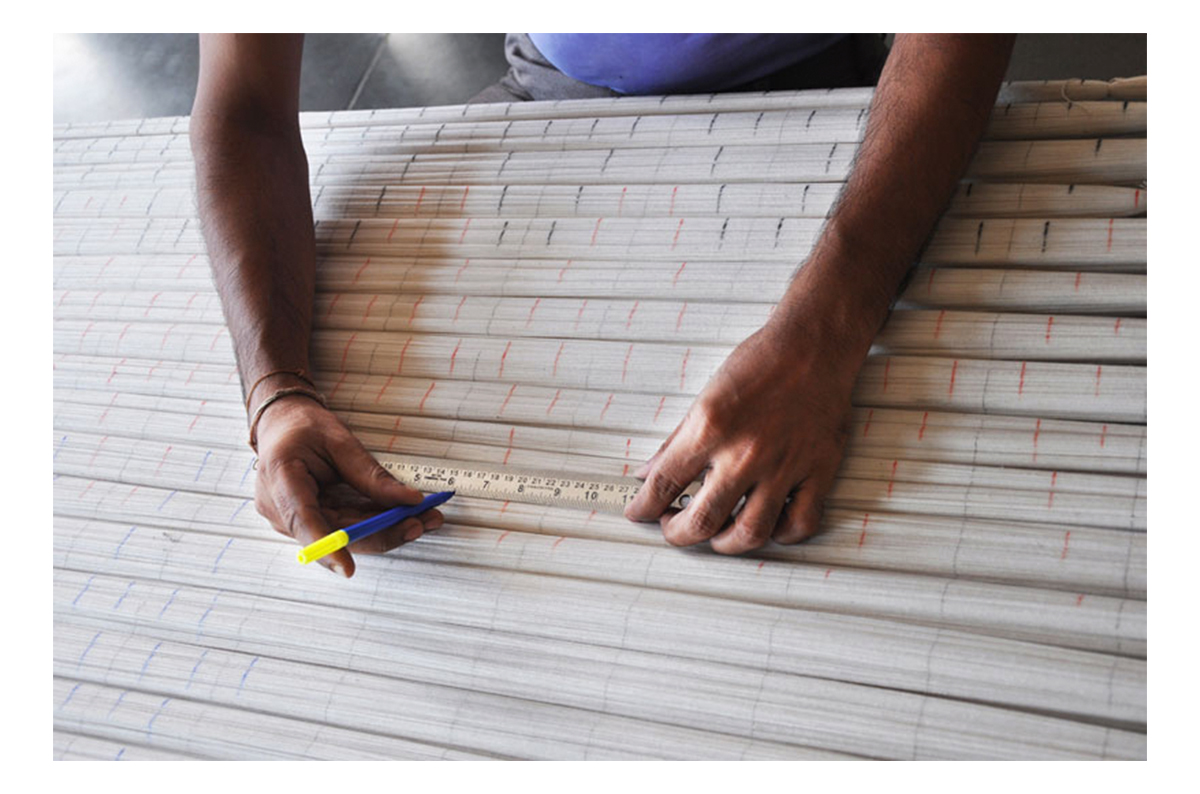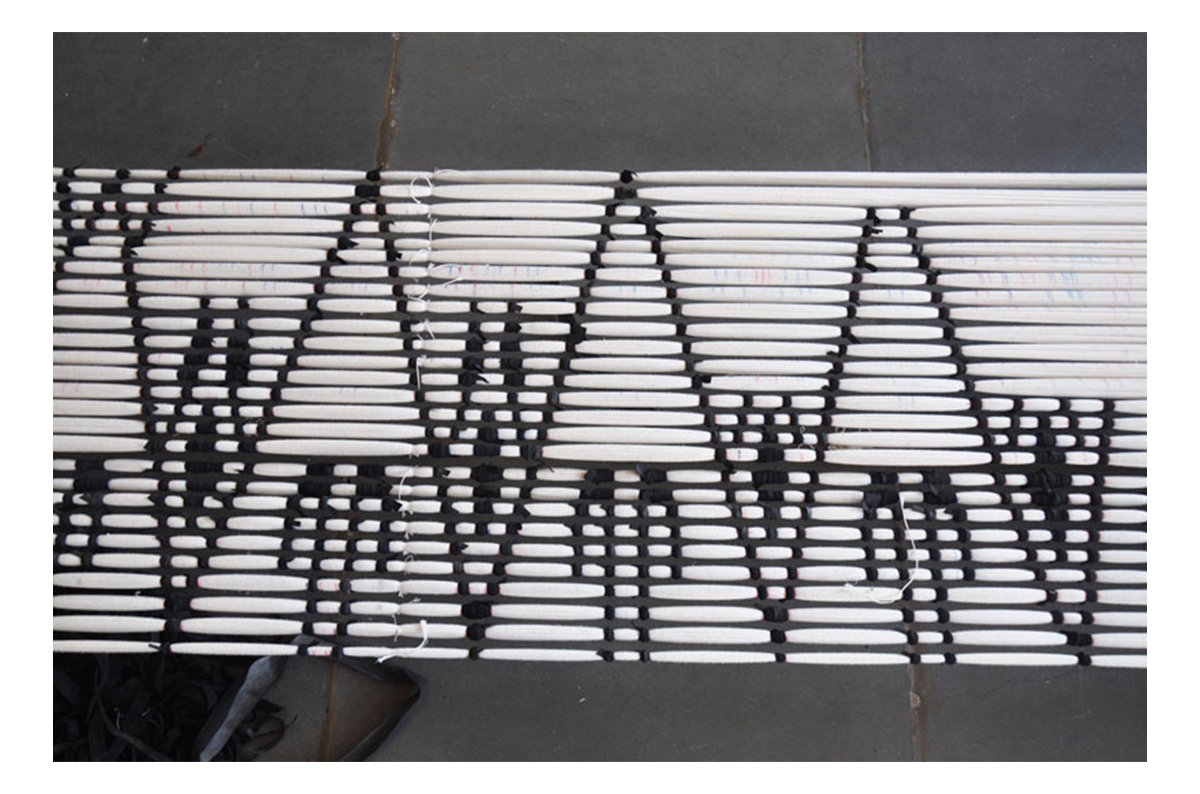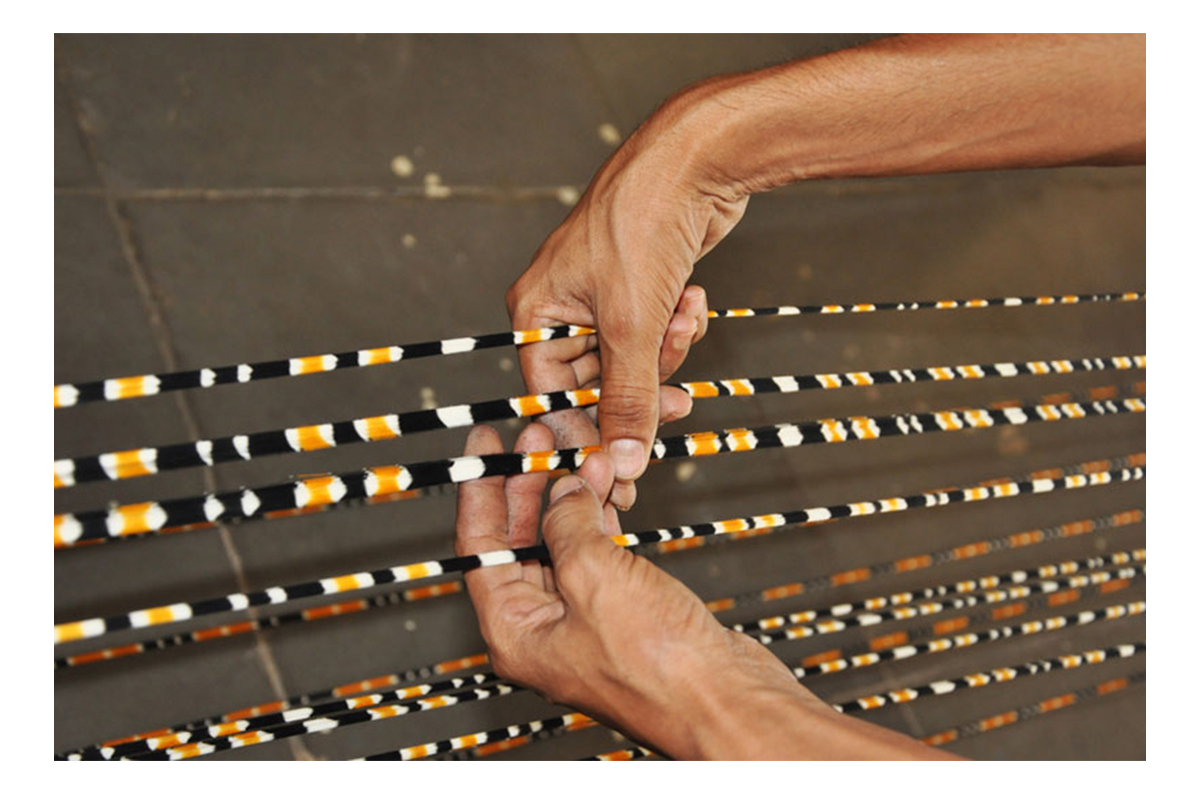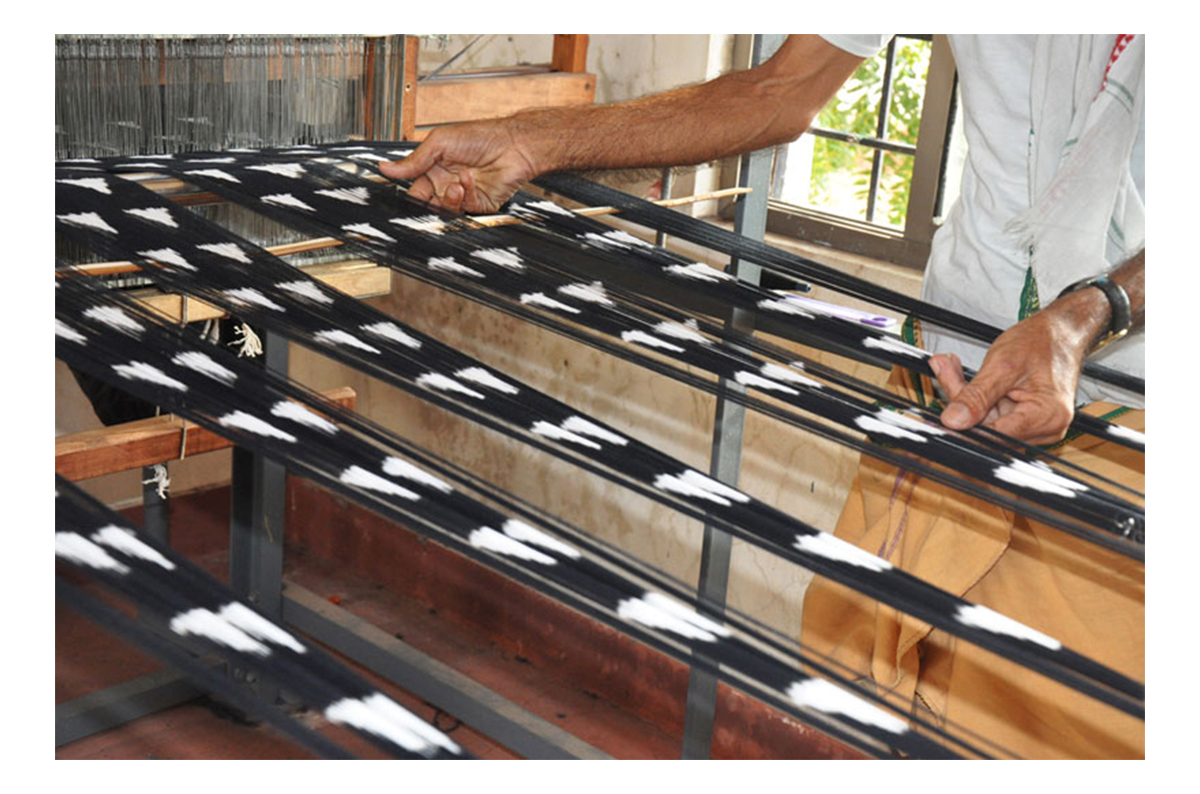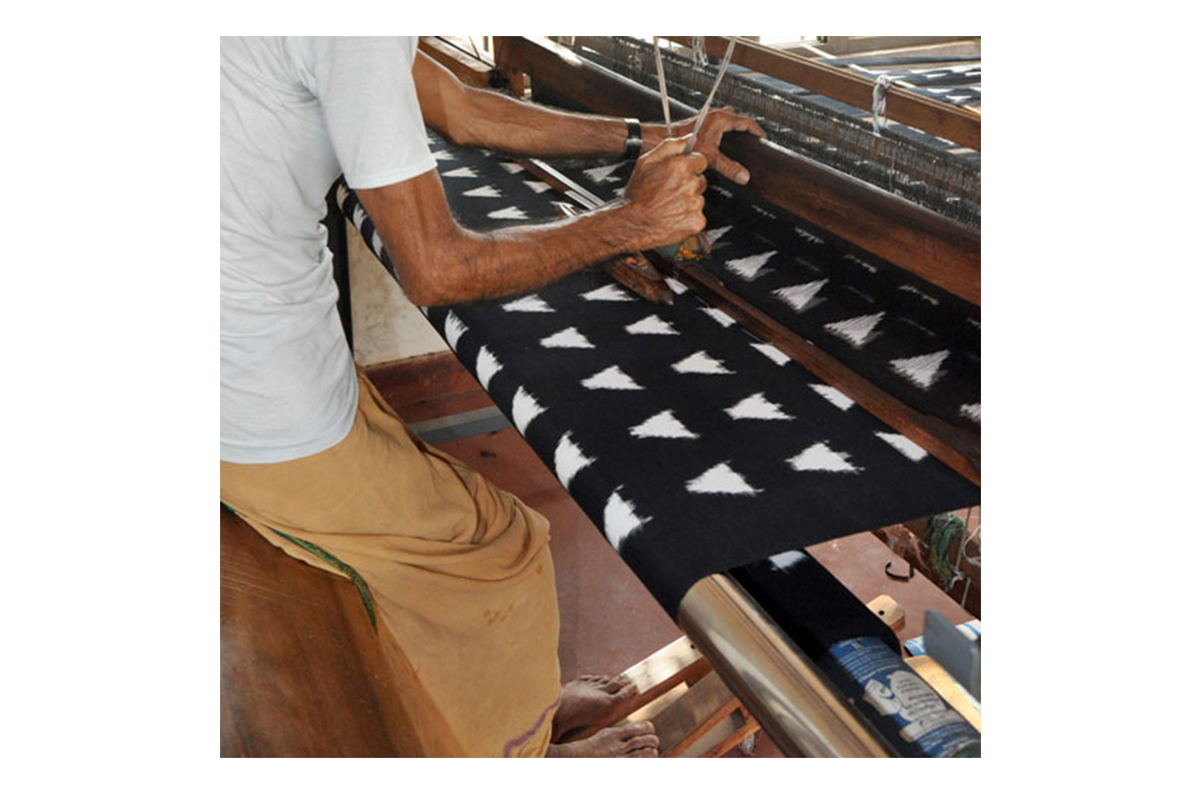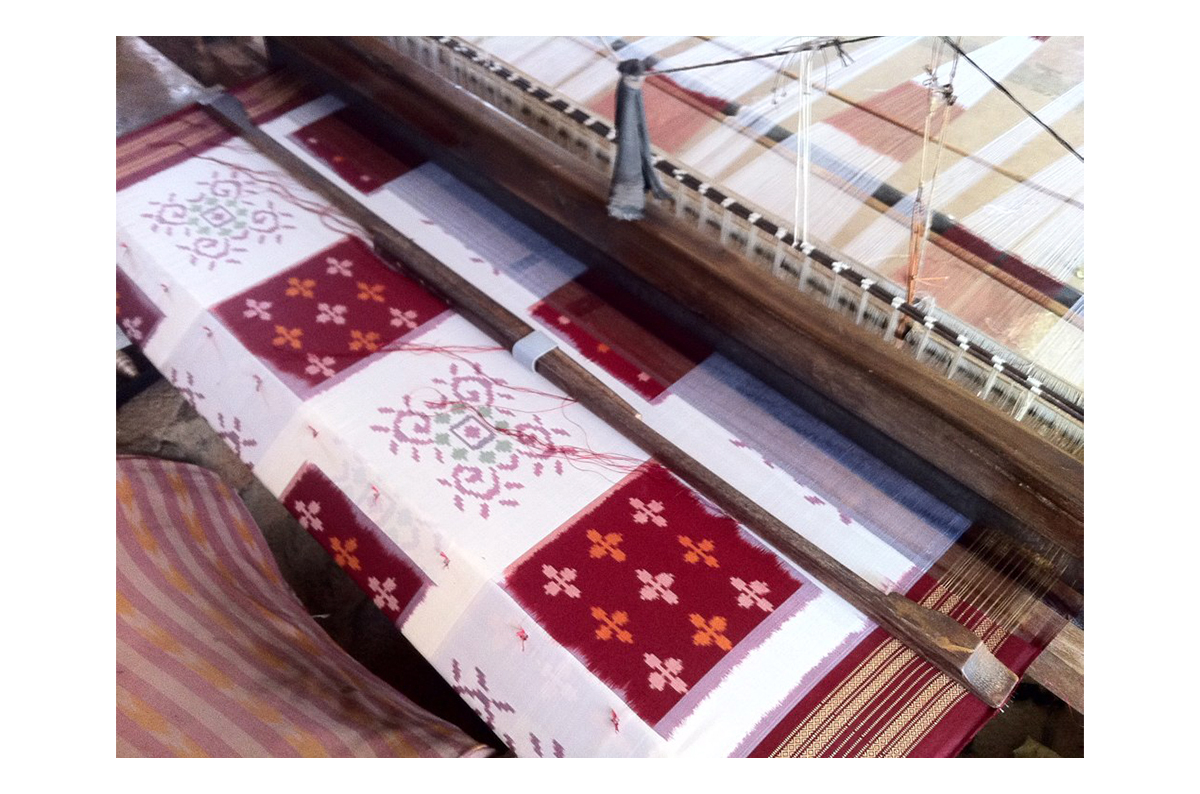ARTICLE
Pochampally Ikat
A term encompassing textiles and garments made of cotton, silk or sico in single and double ikat, Pochampally ikat derives its name from the centre of its production, the town of Bhoodan Pochampally in the state of Telangana (previously a part of Andhra Pradesh).
Ikat weaving in Telangana and Andhra Pradesh is locally known by names such as pagdabandhu, buddavasi and chitki. Scholars speculate that knowledge of ikat in the Deccan region stretches back to the second century BCE, with ikat-like patterns being identified in the mural paintings of the Ajanta Caves. While the origins of ikat in present-day Telangana and Andhra Pradesh have not been dated, it is believed that the technique is a relatively recent development in these regions. Telia rumals, large square handkerchiefs dated to the late 1800s, are considered to be the oldest examples of ikat textiles in the region.
Within Pochampally, ikat is likely to have been introduced from Chirala, which was the chief centre of production for telia rumals and a brisk export trade. Weavers in Pochampally adopted the ikat technique to produce jananis (a long sari), dupattas (head coverings) and mardans (turbans), among other textiles. From here, it also spread to the villages of Koyyalagudem, Chautupal and Puttapaka. As ikat weaving suffered a decline in Chirala, Pochampally became the new centre of the technique in Andhra Pradesh (and later Telangana).
All three ikat-weaves – single ikat, compound ikat and double ikat – are produced in Pochampally. In single ikat, only the warp yarn or the weft yarn is tie-resist-dyed. Of the two, the single weft ikat is more complex, requiring greater skill to correctly weave the pattern. In compound or combined ikat, the warp and weft are both tie-resist-dyed, but form motifs in different parts of the fabric and have little interaction. Double ikat demands the most skill: here the warp and weft must be resist-dyed and woven with great precision for the pattern to emerge. The preparation of the warp and weft prior to dyeing is similar to the process followed for the telia rumal, with the exception of the ash and oil pre-treatment, which is not required for synthetic dyes. In the 1960s, interventions by the All Indian Handicrafts Board began training weavers in Pochampally in silk weaving. Weavers also quickly adapted to the use of modern synthetic dyes, as opposed to the organic alizarin dyes favoured in Chirala. In terms of patterns and motifs, Pochampally ikats expanded from using simple geometric designs to include complex floral patterns and even imitations of the patola motifs and designs.
Pochampally and its neighbouring villages are still a major centre for ikat, producing textiles such as saris, yardages, dupattas and stoles. These are made by individual weavers as well as handloom cooperatives. Launched in 2018 with the support of the Ministry of Textiles, the Pochampally Handloom Park employs weavers to produce home textiles such as bedspreads, quilts and bags using the ikat weave.
Pochampally Ikat received its Geographical Indications tag in 2004.
Bibliography
Our website is currently undergoing maintenance and re-design, due to which we have had to take down some of our bibliographies. While these will be re-published shortly, you can request references for specific articles by writing to hellomapacademy@map-india.org.




